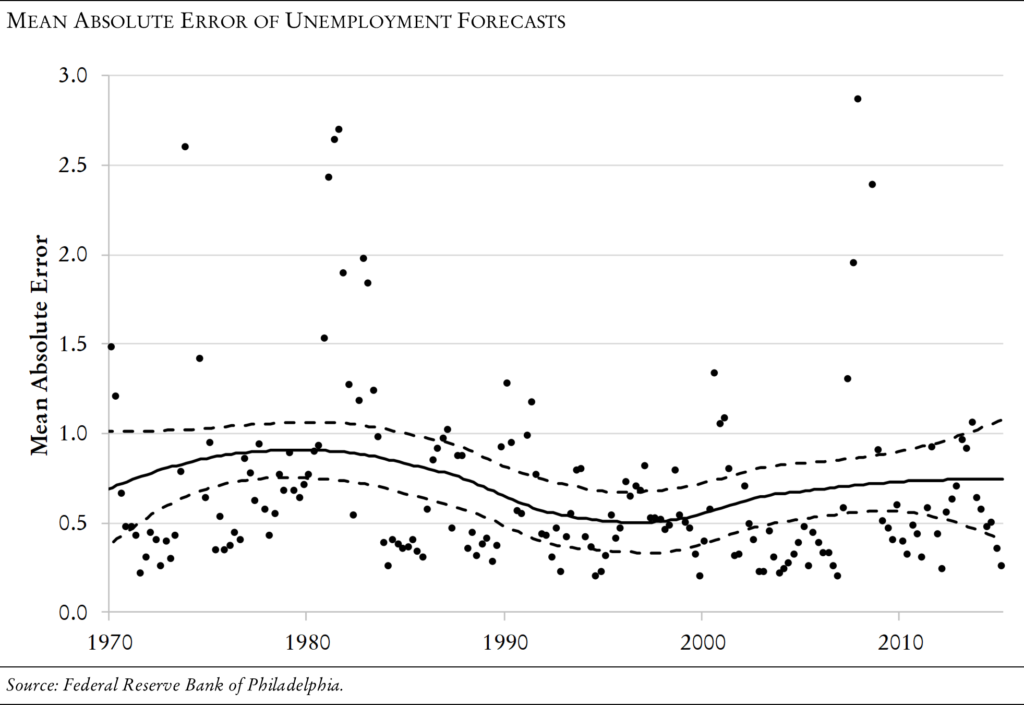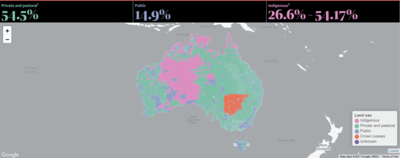This piece brings to mind another post, from 2009:
Keynes on Economists
The study of economics does not seem to require any specialised gifts of an unusually high order.
Is
it not, intellectually regarded, a very easy subject compared with the
higher branches of philosophy and pure science? Yet good, or even
competent, economists are the rarest of birds. An easy subject, at which
very few excel! ....MORE
And the headline story from American Affairs Journal, October 2017:
What is an economist? There is an easy
answer: economists are social scientists who create simplified
quantitative models of large-scale market phenomena. But they are more
than that. Besides their scientific role, economists have achieved a
social cachet that far exceeds what one might expect from a class of
geeky quasi-mathematicians. In addition to being scholars, economists
today often advise national leaders, occupying some of the most
influential roles in government. They are commonly treated like modern
sages, given column space in our most prestigious periodicals, and
turned to for analysis that goes far beyond pure economics and veers
into politics, culture, and even morality. They command high salaries in
government, academia, and the private sector, and they even have their
own Nobel Prize.
Economists and their admirers presumably believe that the respect and social prestige accorded to them is earned rather than accidental—that
they are respected and honored in proportion to their numerous
accomplishments and the value they can provide to society. Skeptics like
me disagree, and believe that economists are overrated, overpaid, and
beyond some limited cases do not contribute to society as much as they
would have us believe. At any rate, given their exalted status, it seems
necessary to examine more closely what value economists actually
provide to society and whether it justifies their popular acclaim.
The prominent economist N. Gregory Mankiw once jokingly suggested an
analogy for the value that an economist provides to society. During a
talk he gave about the Great Recession, he joked that being an economist
during a recession is like being an undertaker during a plague: times
are sad, but business is good. Undertakers make a valuable contribution
to society, but a necessarily limited one: they do not predict plagues,
nor do they cure any of the victims. If economists really were analogous
to undertakers, we would expect that their social standing should be
greatly reduced. Merely cleaning up some of the fallout of forces that
one does not understand or control is not what brings one a plum cabinet
post, exorbitant salary, or Nobel Prize.
In practice, economists seem to view themselves more like doctors
during a plague. They confidently claim to have solid answers about the
cause of the disease (or recession) as well as how to treat and
eradicate it, and make a living from convincing people of this special
expertise. Mankiw himself seriously compared economists working on the
economy to doctors treating a sick patient in the pages of National Affairs
in 2010. Even if one accepts this analogy, it leaves ample room for
both positive and negative interpretations. During the Black Death,
doctors enjoyed good business, but usually provided patients only a
mixture of incompetence and superstition rather than healing or real
knowledge. By contrast, during some of the great successes of medical
history, like the eradication of smallpox, doctors provided expertise
and effort that greatly increased human well-being.
In a recent article in aeon, Alan Jay Levinovitz offered yet
another analogy for what economists do for society. He wrote that
economics is “the new astrology,” and that its dazzling mathematics is
only a distraction from its failure at “prophecy.” To make his case, he
cited numerous failures of seemingly clever economists to predict the
future, make money, or avert recessions.
An apologist for economics could respond to this by saying that
economics is more like the early stages of astronomy than today’s
astrology. For hundreds of years, legitimate and sober-minded
astronomers advocated incorrect theories like Ptolemaic geocentrism
because they didn’t know any better. However, they were on the right
track: after more assiduous observation and study, astronomers corrected
most of their incorrect notions and have collectively given to us a
mature field that is capable of understanding distant galaxies and
landing a rover on Mars. Though astrology was always irredeemable,
astronomy only needed time and better observational technology to become
the respectable field it is today. If economics is comparable, it only
needs time and better observations in order to become as powerful and as
correct as astronomy.
So which is it: are economists more like astronomers, working through
occasional scientific imperfections to deliver valuable insights, or
are they more like astrologers, charlatans pretending to have secrets to
an esoteric mystery that is really nothing more than nonsense? Are they
the doctors who eradicated smallpox, tireless and altruistic in their
pursuit of truth and human flourishing, or are they the plague doctors
who made a living peddling myths and quackery? These are not only idle
philosophical questions. The millions of dollars that U.S. taxpayers
spend annually on full-time government research economists and grants to
academic economic research deserve to be properly justified or, if
necessary, rerouted.
In this essay, I will attempt to quantify the performance of the
economics profession over the last several decades. I will argue that
the data suggests that economics has progressed very little for many
years, and performs especially poorly around the time of recessions,
when it would be most important for economists to perform their duties
well. Because of this, I will also propose an adjusted and more modest
role for economists in public life.
Case Study: Macroeconomic Prediction
To evaluate the performance of economists, it may be helpful to
explore some data from the Survey of Professional Forecasters (SPF), a
quarterly survey that has been conducted by the Federal Reserve Bank of
Philadelphia since 1968. The survey is simple: the Federal Reserve Bank
contacts professional economic forecasters and asks them to predict
future values of a variety of macroeconomic indicators, including
unemployment and nominal GDP. Surveyed professionals make predictions
for the near future (including the current quarter) as well as the more
distant future (up to about four quarters in advance). Anonymized
records of predicted values and actual values since 1968 are available
for free on the Philadelphia Federal Reserve Bank’s website.
In the SPF data, measuring the accuracy of a forecast is straightforward—it
is simply the difference between a predicted value and the
corresponding actual value, where the differences closest to 0 represent
the best performance and the differences furthest from 0 represent the
worst. An example data point might come from a forecaster who was
surveyed during the second quarter of 1975, and was asked to make
predictions about the final measured unemployment in the second quarter
of 1976. If the forecaster guessed 4.5 percent unemployment but the
actual realized value was 6.0 percent (for example), his absolute error
was 1.5 percentage points. If another forecaster guessed 7.5 percent for
the same quarter, his absolute error would also be 1.5 percentage
points (overestimates and underestimates are treated the same).
After calculating the absolute errors for each forecast in every
quarter, we can take the average of the absolute errors from all
forecasters in a particular quarter to gauge the forecasters’ overall
performance in that quarter. Then, we can look for two things: first,
absolute performance in every quarter, to answer the question of how
well economists perform at macroeconomic forecasting, and second, change
over time, to answer the question of whether economists’ macroeconomic
forecasting has improved over the decades.
The SPF dataset includes 6,808 forecasts of unemployment and 6,716
forecasts of nominal GDP. Here, I will only examine forecasts that are
made four quarters ahead (for example, forecasts that are made in 1975,
quarter 2, about the final realized unemployment rate in 1976, quarter
2).
The mean absolute errors over time for SPF predictions of U.S.
unemployment are shown in the chart below. In this figure, the black
dots show the quarterly mean absolute errors of unemployment forecasts.
So a value of 1.5, for example, means that the average forecaster’s
guess was 1.5 points away from (above or below) the true value: either
guessing 4.5 percent or 7.5 percent unemployment when actual
unemployment was 6.0 percent. The solid line shows a “Loess curve,”
which is something like a rolling average of the plotted mean errors. (A
Loess curve is based on a weighted local regression methodology rather
than a raw average.) The dotted lines show a “confidence interval” for
the solid Loess curve.

One of the easiest things to notice about the errors plotted in the
above chart is how large they get. The majority of quarterly average
errors are larger than half a percentage point, which is a considerable
difference for a figure that is almost never outside the 6-point window
between 4 and 10. In many quarters, the average error is larger than 1
percentage point and even exceeded 3 points in one quarter. The value of
the Loess curve is never less than 0.5 percentage points.
As for the trend of the data, there is no sharp increase or decrease.
There are many different methodologies for finding time trends in data,
and some of these methods will indicate a slight downward trend for
these errors. At best, the downward trend is very slight. However, there
is evidence that the errors are stagnant:
- The Loess curve reached its minimum value in 1996, two decades ago.
Throughout the 2000’s the Loess curve rises, as does its confidence
interval.
- The most recent confidence interval contains the estimated Loess
value from the earliest recorded quarter (1968, quarter 4). Similarly,
the earliest confidence interval contains the estimated value from the
most recent recorded quarter.
Another important thing to point out in this data is that the errors
appear to be especially large just before and during recessions. We can
see spikes around 1973–1975, in the early 1980’s, and the early and late
2000’s, all periods of recession. These spikes are similar to each
other in maximum height. The period of best forecast performance was the
1990’s, a period of steady and sustained economic growth.
I believe the above figure is damning to the economics profession. It
shows a profession that frequently makes large errors (see the many
high error values plotted), that predicts recessions very poorly or not
at all (see the bad performance around recession quarters) and that has
improved little or not at all over the years (see the relatively flat
and sometimes-increasing “average” line). The errors around recession
years are consistent in their large size—I
cannot see evidence for an increased ability to predict recessions.
Looking at the chart, it is easy to wonder whether the hundreds of
economics research papers published annually are worth the millions of
dollars that are spent funding them. It is not clear that they deliver
anything more than a flat Loess curve indicating stagnation. The yearly
Nobel Prize in economics is meant to represent game-changing advances in
the field. But it is not clear that big advances have happened at all
in economics over the time plotted above, let alone the annual
game-changing advances that the Nobel committee claims.
So, economists have a poor track record at prediction, and show
little or no evidence of progress over the decades. If they cannot
predict well or improve at prediction, it is not clear why we should
believe that they have done any better at anything else they claim to be
able to do. It is also not clear that we should continue to ask their
opinions about the economy’s state or future. Neither is it clear from
these poor results that we should exalt them to cabinet posts or give
them column space in prestigious periodicals. What then is their value? I
will consider this below.
Interpreting the Data
Before moving on to assess the value of economists in public life, it
would be worthwhile to consider the implications and limitations of the
data shown in the case study above. The SPF dataset is well-suited to
an evaluation of the performance of economists for several reasons.
First, simply because it consists of methodically collected data rather
than anecdote, it rises above the anecdotal cases frequently made by
pundits about economic issues. Second, because the survey has asked the
same questions in the same way across its entire existence, it enables
comparisons between different time periods that would otherwise be hard
to compare, including times of peace and war, boom and bust, low
interest rates and high, and a variety of different types of elected
government administrations.
A third and very important advantage of the SPF as an evaluation
metric for economics is that it provides a pure measure of the
performance of economists and their knowledge rather than the performance of the economy
itself. Evaluating economists based on the performance of the economy
always runs into the impossible challenge of finding the right
counterfactual as a reference point. In other words, any criticism like
“you mismanaged the aftermath of the Great Recession and all of your
policies led to a sluggish recovery” can be met with the response “the
recovery was indeed sluggish, but it would have been much more sluggish
without my perfectly wise and effective policies.” There is no obvious
reference point for performance, so 3 percent growth could be argued to
show poor management by economists since it is less than 5 percent
growth, and 2 percent contraction could be argued to show good economic
management since it is better than 4 percent contraction.
No matter how bad the performance of the economy, economists can cite
an imagined world without them full of recessions to justify their
existence and high salaries. With SPF data, by contrast, the 0 lower
bound of absolute errors is indisputably the right reference point. No
economist can argue that his 5 percent error rate was perfect because it
was less than 6 percent – it is clear to everyone that 0 percent error
is the right place to be.
A potential objection to this case study has to do with the validity
of the inference from macroeconomic forecasting to the rest of
economics. An economist might concede that macroeconomic forecasting is a
relatively stagnant sub-field of economics, but argue that its poor
performance does not reflect on the performance of microeconomics, or
game theory, or optimal taxation theory or some other corner of
economics.....
....MUCH MORE
Always bear in mind that just using the tools of science (maths) doesn't make economics a science.
And the related: just because carbon traders use the tools of markets it doesn't make what they do market-based.
Here with a dissenting opinion on econ and the economists is Noah Smith writing at The Week in January 2014, before he went on to Bloomberg Opinion:
Why Economics Gets a Bad Rap
And for readers who are interested in practical economics, January 2011's:
HOW THE RICHEST ECONOMIST IN HISTORY GOT THAT WAY






